
 Netalliance specializes in bringing ISDN Internet Connectivity to your organization.
Netalliance specializes in bringing ISDN Internet Connectivity to your organization.
We deliver a turnkey solution, handling everything from coordination with telecommunications carriers, to firewalls and rollout of internet services on your LAN.
 |
||
 |
 |
 |
isdn network internet access
Integrated Services Digital Network (ISDN) is much more than a telephone line; it's actually a multichannel circuit that can be shared by multiple telephones, PCs, fax machines and other terminal devices.
Some of the characteristics that distinguish ISDN are:
- It builds on groups of standard transmission channels.
Bearer channels (or B channels) transmit user information at relatively high speeds, while separate Delta channels (or D channels) carry call setup, signaling and other information.
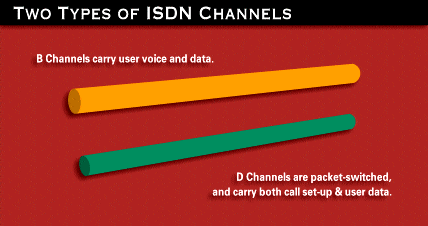
- It handles all types of information. Unlike some other digital communications technologies, ISDN handles all types of information: voice, data, studio-quality sound, still and moving images. They are all digitized, and transmitted at high speeds in the same flow of data.
- It handles many devices and many telephone numbers on the same line. Up to eight separate telephones, fax machines or computers can be linked to a single ISDN connection, and have up to 64 "call appearances" of the same or different telephone numbers.
- It supports up to three calls at the same time. Two voice, fax or PC "conversations," and one data "conversation" can take place at the same time, through the same ISDN connection. The three channels work powerfully and efficiently together, providing the flexible communications bandwidth to the application at hand, improving efficiency and lowering costs.
- It offers variable, responsive transmission speeds. Two or more
channels can be combined into a single larger transmission "pipe". Channels can be assembled as needed for a specific application (a large videoconference, for example), and then broken down and reassembled into different groups for other applications (normal voice or data transmissions). Combining B channels in this manner is called inverse multiplexing. Compression techniques can be applied to raise effective throughput even further. Netalliance has seen the compression be as high as 4:1, though 2:1 is more typical. Compression, of course, depends upon the type of information transmitted. Higher speeds also can be achieved by aggregrated multiple ISDN Single Line Services.
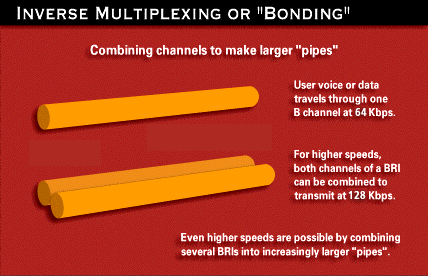
isdn service types
BRI = 2B+D:The basic ISDN-to-user connection, called a Basic Rate Interface (BRI) contains two B channels and one D channel. The B channels carry user "conversations" from a telephone, a computer, a fax or almost any other device, while the D channel carries call setup information for the network, but can also carry user data transmissions.
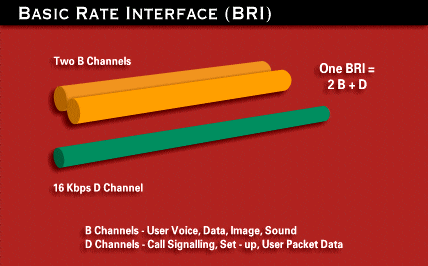
PRI = 23B+D:
The Primary Rate Interface or PRI in the United States consists of 23 64Kb/s Bearer (B) channels and one 64Kb/s Data (D) channel, or a 23B+D connection. With a total bandwidth of 1.544Mb/s, it is designed for transmission through a standard North American T-1 trunk.
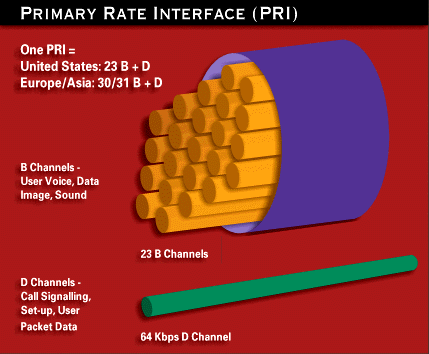
BRI services are appropriate for individual and office LAN users, while PRI offers bandwidth capability to serve large LANs or enterprises with combined voice/data applications.
The D channel can also be used for certain data applications, offering speeds of up to 9.6 Kbps, carrying only computer-based or data-related information - no voice. It's ideal for "bursty" traffic such as small file transfers, E-mail and credit authorizations. Communications are almost instantaneous, because the channel is always "on" -- no dialing is required. On the D channel, it's possible to communicate with any device or location that has access to the public packet network.
ordering isdn service
Getting ISDN Internet access involves Netalliance configuring your equipment and arranging for the local telephone company (typically US West) to install the line based on our configuration settings. Ordering of the line from the local telephone company does not guarantee that the line is available in your area. To check the availability of ISDN in your area, check out the US West Web Site for more information. Installation typically is 2-3 weeks for the installation from US West. Once the line is installed we schedule your onsite rollout.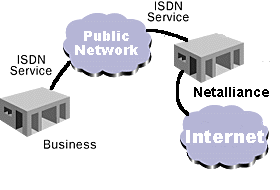
Netalliance ISDN services are implemented as a "Dial-on-Demand" network. The link is brought up when traffic is present, and idle when there is no activity. Our pricing is based on the throughput (number of B-channels) you utilize, and whether the connection is one-way (only outbound traffic from your LAN brings up the link) or two-way (traffic inbound from the internet or outbound from your LAN can bring up the link). When you order your ISDN service from Netalliance, we'll work with you to determine the appropriate level of service for your needs.
Phone 651-556-9600; Fax 651-645-7550; info@backpack.net
All rights reserved. All material copyright. Netalliance, Inc. © 1995-2005. Updated: June 12, 2008.









